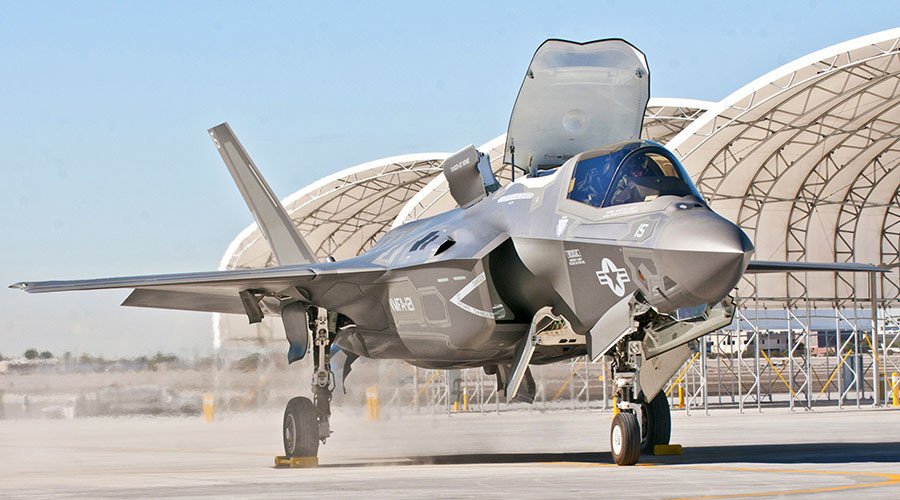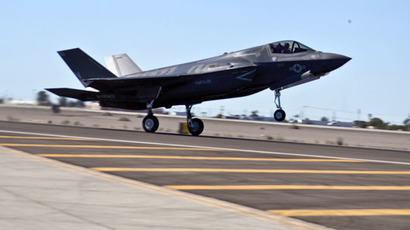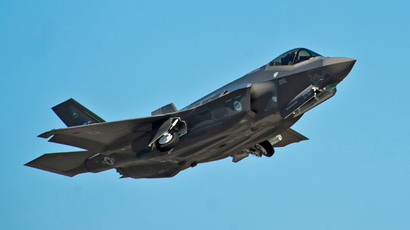F-35 deathtrap: Pentagon jet’s ejection seat could snap pilot’s neck

Tests on the Pentagon’s troubled F-35 fighter jet have exposed a potentially life-threatening blunder as its ejection seat could snap a slender pilot’s neck when attempting to save his life, Defense News reports, citing a source close to the program.
Ejection tests performed in slow flying speed mode in August revealed that the pilot’s US16E seat constructed by contractor Martin-Baker has an excessive forward rotating momentum, which – combined with the force of the ejected seat shot out of the aircraft – snapped a lightweight dummy’s neck.
The US Air Force has already barred pilots weighing less than 61 kilograms from flying 5G aircraft until the problem is fixed, Defense News reports.
READ MORE: F-35 fighter jet more problematic and costly than ever imagined – Air Force secretary
“The bottom line is, they have to get into the realm where the seat allows that weight of a pilot less than 136 pounds [approx. 61 kg] [to] safely eject out of the airplane,” Major General Jeffrey Harrigian, F-35 integration office director, told Defense News. “They found some areas that particularly at slower speeds they were concerned about, so that drove the restriction that we have right now.”
There are not many military pilots weighing 60 kilograms, yet even a beefier pilot could face spondylolisthesis (dislocation of the vertebra) in an ejection situation. Consequently, at this stage, an emergency evacuation from F-35 in distress might become a risky game of Russian roulette for pilots.

“It’s that light pilot and the center of gravity of the seat,” Col. Todd Canterbury, who used to be commander of the 33rd Fighter Wing until June and flew F-35 software versions 1B, 2A, 3i and 2B, told Defense News. “It all has to do with getting that center of gravity kind of located within the window, we call it, for safe seat-man separation.”
When the parachute of the ejection system opens, a lightweight pilot may not be in the optimal body position to eject out of the plane, Canterbury said. In other words, the jerk of the activated parachute system is so powerful that human neck bones might not sustain it.
READ MORE: Norway gets first of US’s controversial F-35 jets, citing ‘increased Russian activity’ in region
“Safety is our No. 1 concern and we want to make sure that we give the warfighter the safest ejection seat capable out there,” Canterbury said, adding that the weight restriction is an interim fix, and the Joint Program Office is working in close cooperation with F-35 builder Lockheed Martin and seat producer Martin-Baker on a permanent solution.

The ill-fated $350 billion program has been delayed for more than eight years now, as the number of problems have gathered like a snowball, involving a series of hardware malfunctions and software glitches.
READ MORE: But does it fly? Government auditors blast poor F-35 engine performance
The performance of the F-35 Joint Strike Fighter has been slammed as inferior to older American and foreign jets it is expected to outperform in engagements.














